

While Quintessenz’ magnificent installations are a feast for the eyes in their finished form, for Thomas Granseuer and Tomislav Topic they are as much about the process of creation as they are about the end result. Focusing on how colors come across in their works, the Hanover and Berlin-based artists transform spaces and alter the viewer’s perspective, making each visit a unique encounter.
Working with old factory buildings and derelict ruins as their canvases, Quintessenz’ installations interfere with these environments. Their most recent project, Kagkatikas Secret, is a perfect example of this approach. As part of the Paxos Contemporary Art Project, they installed hundreds of sheets of spray-painted fabric in a 400-year-old Greek building. Suspended into rows, the layers of fabric float in the wind, transforming the ancient space they are placed in.
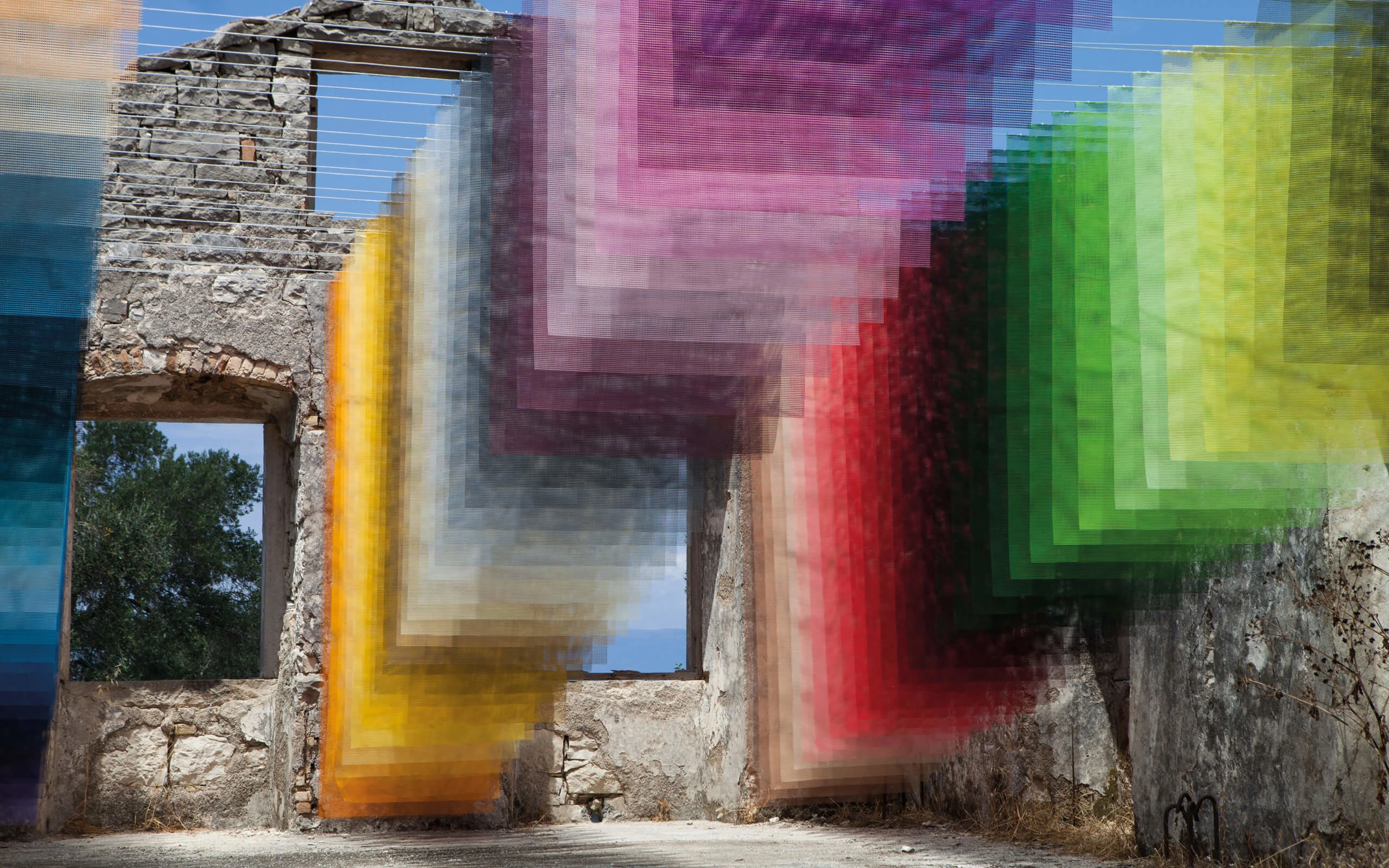
The installation appears pixelated, and upon first glance seems as though it could be computer-generated. This is emphasized by the bland, desaturated colors of the stone walls surrounding it. In this way, Quintessenz create a meeting point between the spaces and their work, building a bridge between the digital world and reality.
These days, their creations have been seen across Europe, but in their younger years they could not be quite so bold in taking ownership of their work. Both Tomislav and Thomas began as graffiti artists, and they are quick to emphasize its importance in shaping the artists they are today. “Graffiti taught us many things, not only creating a unique style, but also the planning of an illegal painting – the communication in between the crew members.”

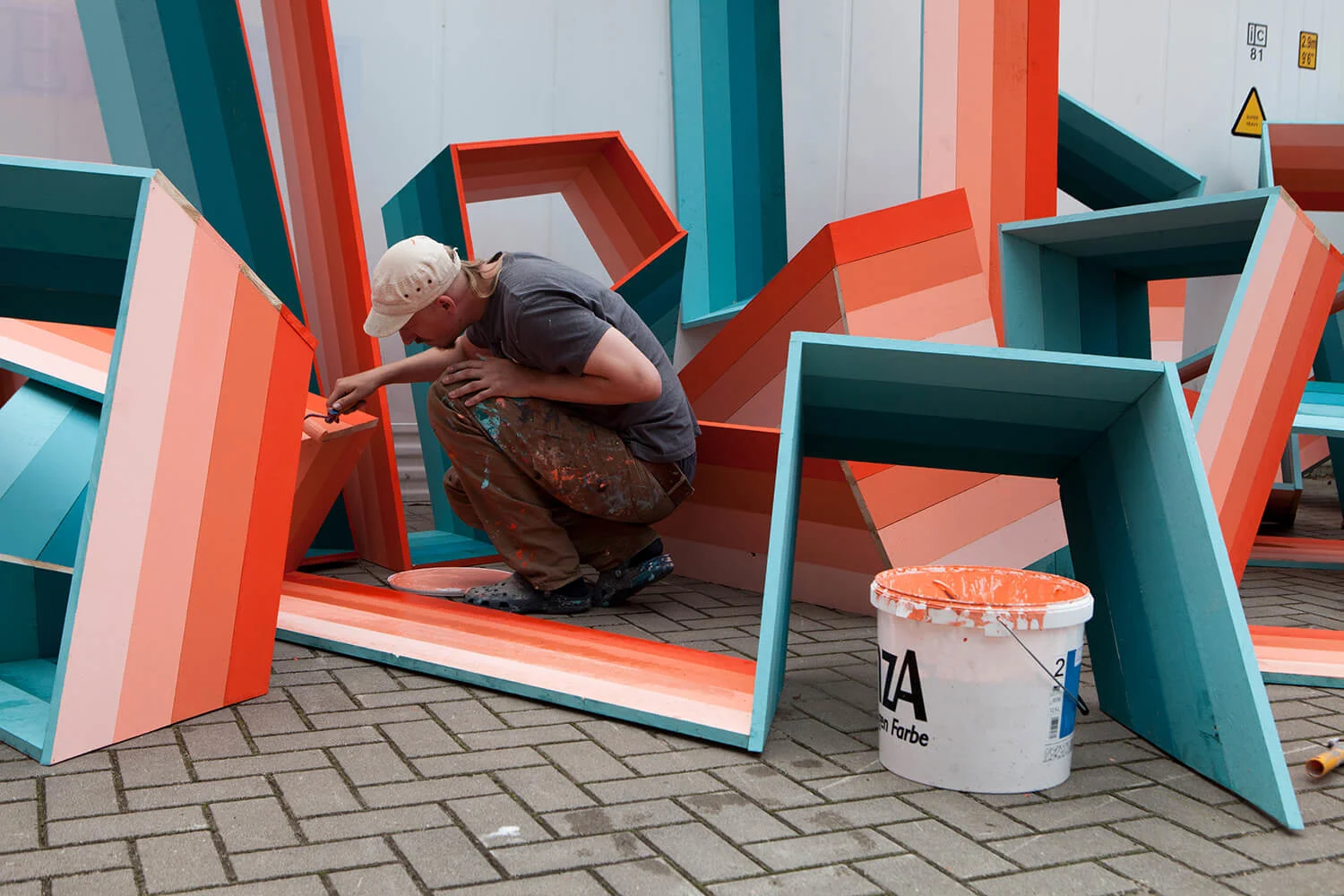
The two attended the University of Applied Science and Arts in Hildesheim together, and have been working together since then. They admit that when they first started collaborating they found it difficult to reel in their egocentric approaches, but their chemistry has improved at a steady rate. “The years have shaped us and have let us understand how each other thinks, feels and works,” they say. “Often we do not even have to talk because our thoughts cross very often.”
Viewing a Quintessenz piece in the flesh is a unique experience. Not only is each installation intended to be shown in a single place for a set time, but also variables such as light, weather and time affect the viewing experience. The structures morph and change depending on the angle they are viewed from, and on the strength of the wind or intensity of the light. “It is about material structures and how they behave under different influences,” they explain.
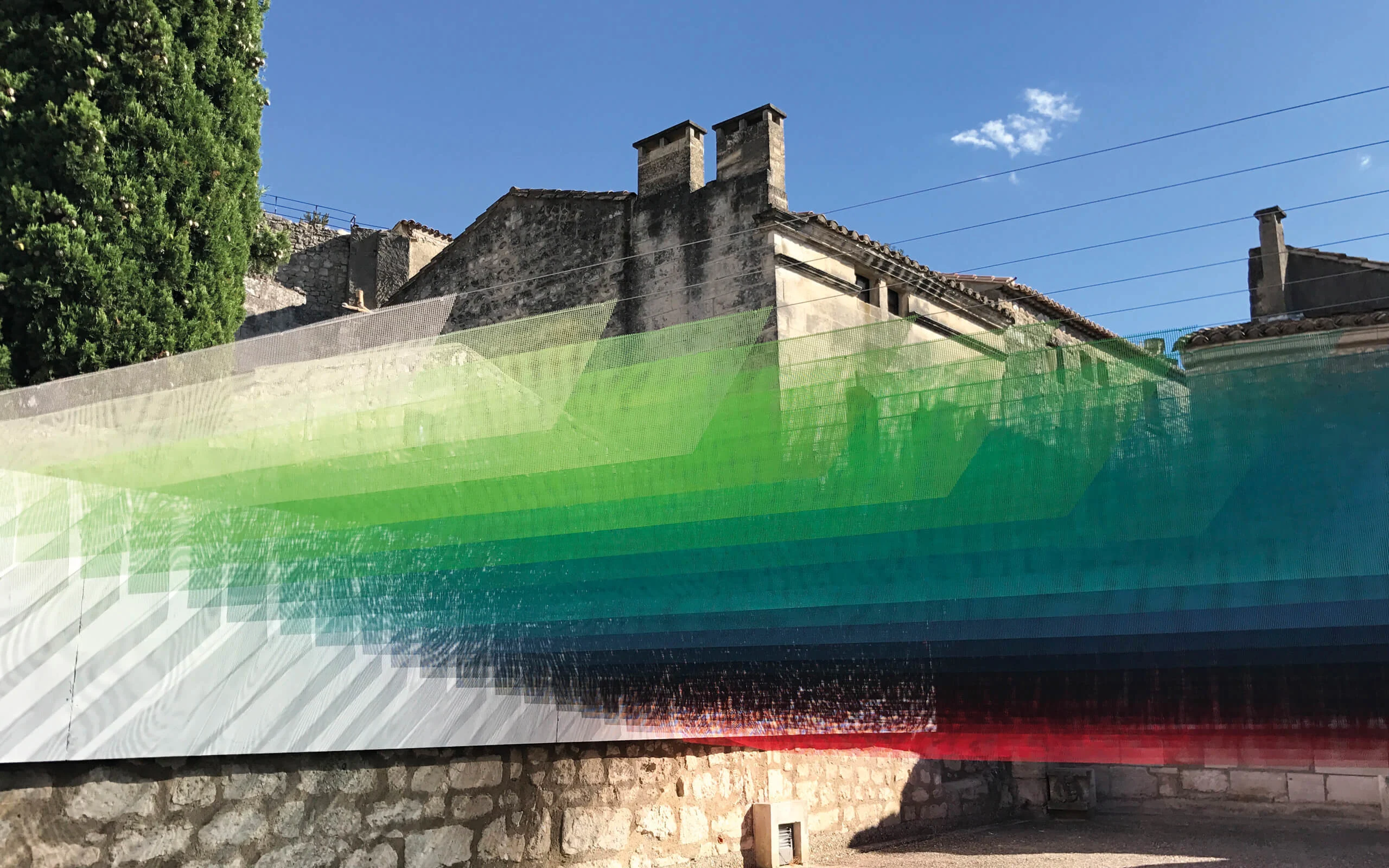
This enthralling end-product would not be possible without the weeks of trials and tests that go on behind the scenes though. For Thomas and Tomislav, the conceptual phase is as much a part of the final piece as the work itself, as they continuously seek out new methods and techniques to change the viewer’s experience.
“Experiments and planned coincidences determine our process,” they say. “We often make mistakes when working with new materials. Mistakes then create new approaches and ultimately lead to new techniques.”

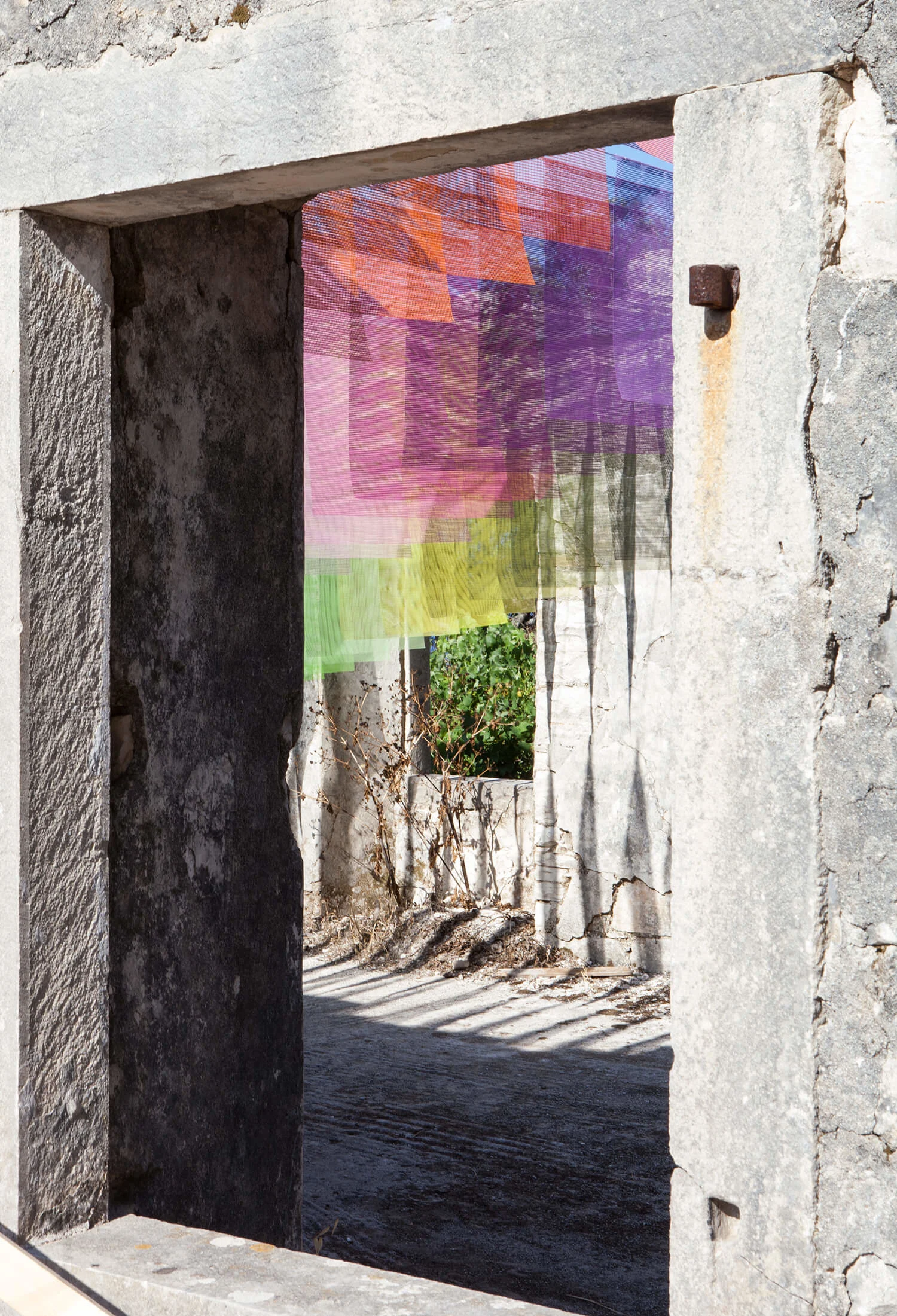
This also informs the meaning behind their installations. “Every other way of working has its origins; ours lies in color, form and material research.” Further messaging, whether political or philosophical, has never been something the two considered. “Art can do so much more than just be a voice for politics… To us, art has the role to be always looking for new approaches and processes,” they profess. “Processes that, at the same time, reassure and transcend our perception of reality and the world.”
As a result, each piece exists timelessly and without context to the real world and political climate. The setting, like the ancient ruins on Paxos, removes the connection to the modern day even more.
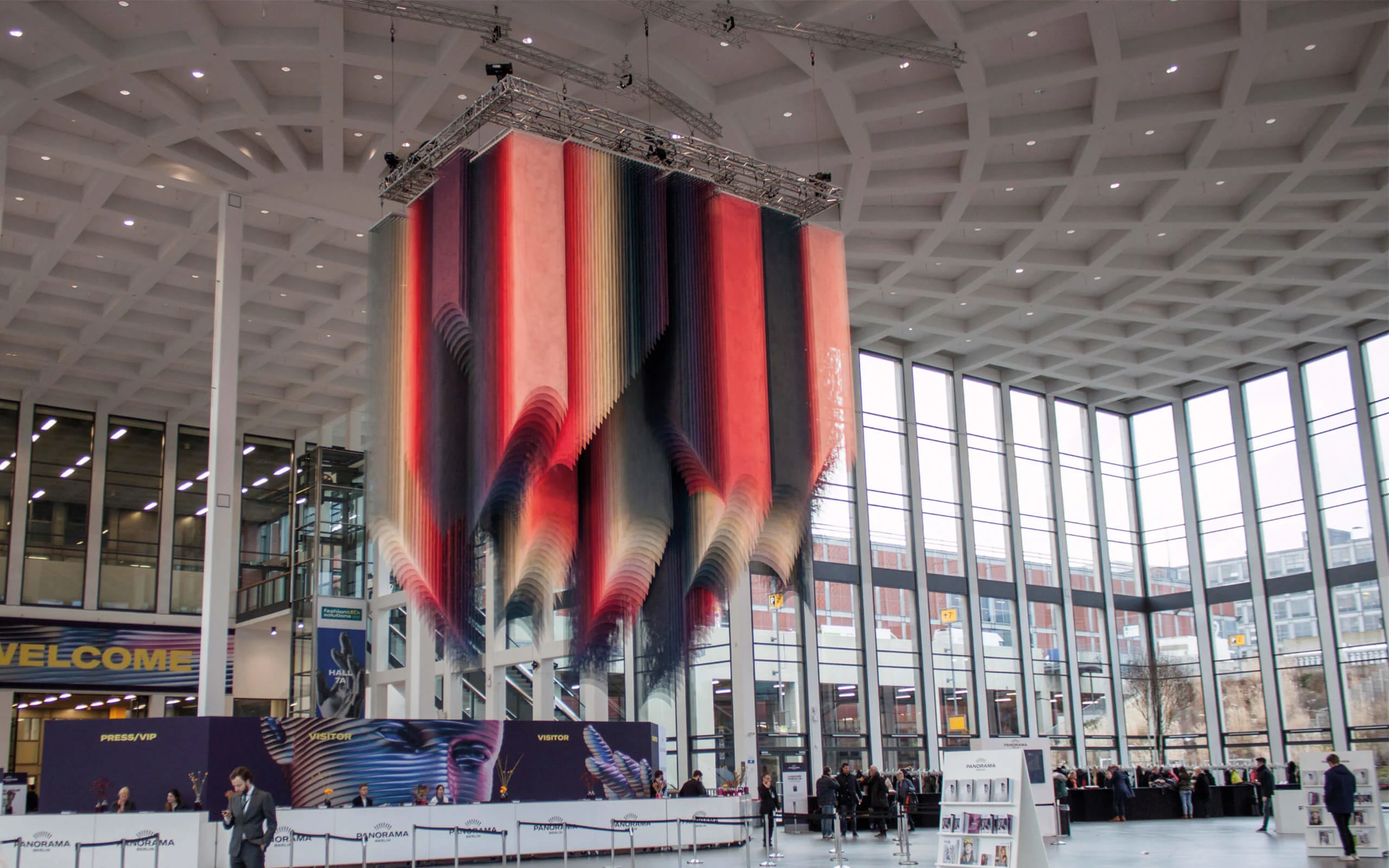
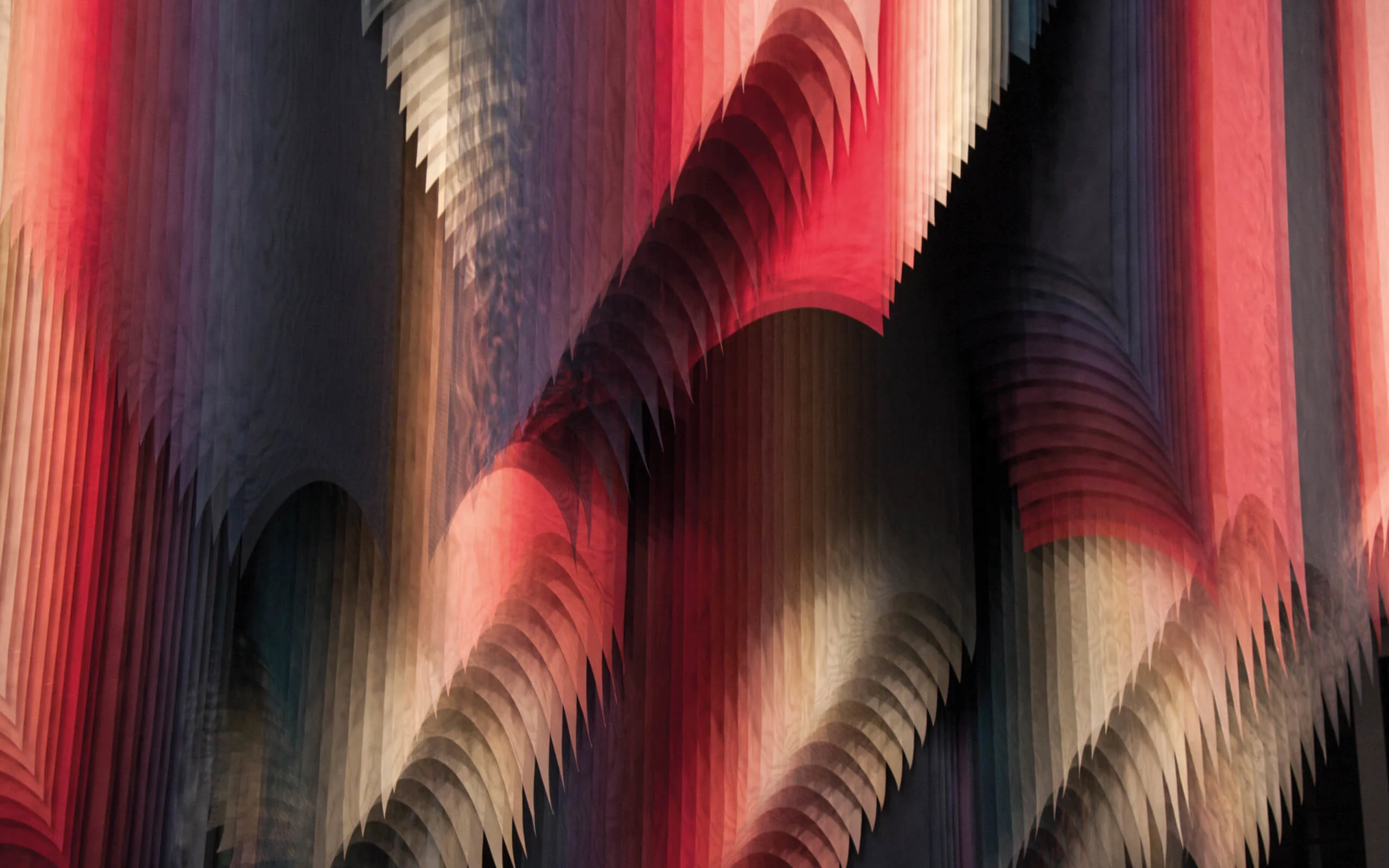
Through their mistakes and experiments, Quintessenz explore a very simple avenue. They want the viewer to “experience a melting moment between analog and digital,” a moment that is made without the use of projections or artificial light, yet often seems ethereal and unreal. Their work comes and goes, each piece representing nothing besides itself - a body of colors that interacts with the person viewing it.
Words by Alex Kahl.

